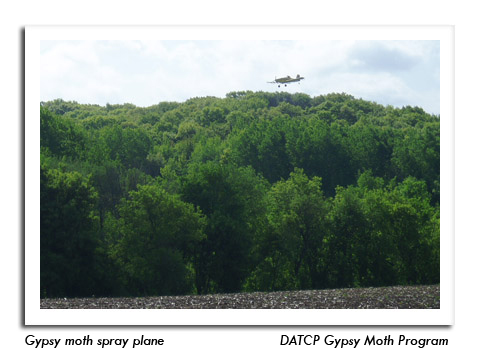
 |
|
|
Nursery & Forest
Volume 60 Number 3 Date 05/07/2015 PINE NEEDLE SCALE - Emergence of first generation crawlers has begun across portions of southern and west-central Wisconsin, where lilacs are in full bloom. Controls applied against this mobile stage shortly after egg hatch are most effective. The proper timing of insecticidal treatments should be determined by monitoring infested pines for newly emerged crawlers. CEDAR-APPLE RUST - Mature galls on juniper are sporulating in Richland County. The bright orange, gelatinous tendrils that emerge from these galls release spores which can infect apples and related fruit trees 2-3 miles away. Cedar-apple rust alternates between junipers and rosaceous plants and requires both hosts to complete its life cycle. Removal of the galls before sporulation is recommended to limit spread of the disease to the alternate hosts: apple, crabapple, hawthorn, quince, pear and serviceberry. NR 40 INVASIVE SPECIES RULE - Revisions to the DNR's Chapter NR 40 Invasive Species Rule were enacted on Friday, May 1 and will be enforced by DATCP inspectors this season. The revised regulations include the addition of 42 new prohibited plant species, 29 new restricted plants, and two species listed as both prohibited and restricted. A phase-out period is provided for plants on the restricted list: three years for herbaceous species and five years for trees and shrubs. Plants on the prohibited list do not have a phase-out option. Nursery operators and brokers are advised to review the proposed revisions and know the invasive plants regulated under Chapter NR40: http://docs.legis.wisconsin.gov/code/admin_code/nr/001/40 . CROWN RUST - The orange-yellow cluster cups which produce spores capable of infecting oats, rye and other grasses are appearing on buckthorn leaves. Heavy amounts of rust inoculum on the buckthorn host may indicate greater rust potential for oats this year, should suitable conditions for infection develop. -- Ellen Hermanson, DATCP Nursery Inspector GYPSY MOTH - Aerial spraying for gypsy moth caterpillars is scheduled to start around May 12 in southern Wisconsin. Twelve blocks are slated for treatment in Green, Lafayette and Rock counties through DATCP's Slow the Spread program, and a single block in Rock County is scheduled to be treated by the DNR's Suppression program. All treatments are dependent on weather conditions and gypsy moth development. Spraying starts at sunrise, and at most sites, a second application will be made three to seven days after the first application. Additional spray program updates, including information on treatment locations and progress, are available at gypsymoth.wi.gov. -- Rick Hummell, DATCP Gypsy Moth Program 



|
|
|